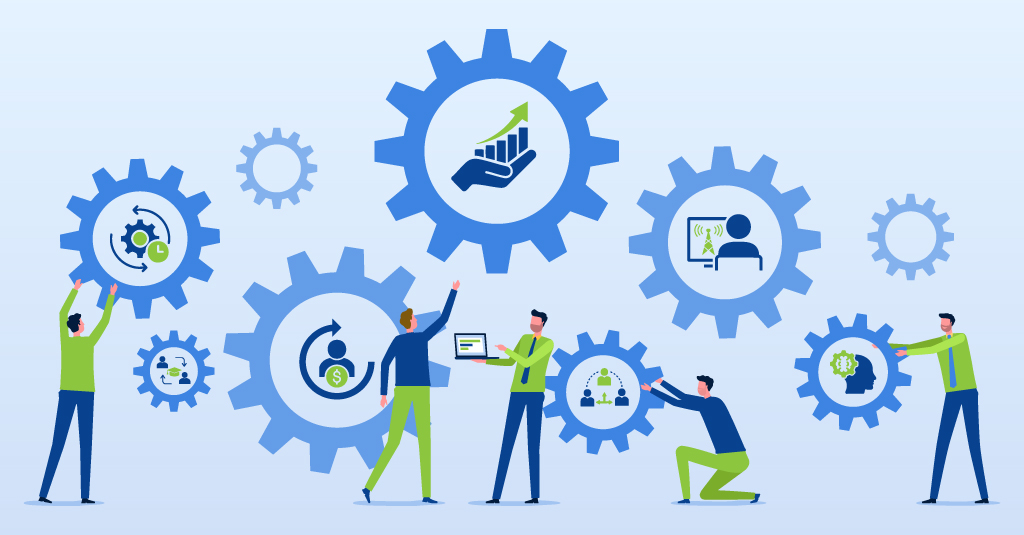Picture this: You are excited for your first day at your new work. You log on, eager to get started, only to be buried behind a mountain of out-of-date PowerPoints, policy PDFs, and an onboarding partner who is somehow even less experienced than you.
Now imagine this happening on a large scale, with hundreds or even thousands of workers spread over many sites who must all be onboarded promptly, effectively, and reliably. For Global Capability Centers (GCCs), such is the situation. The stakes are tremendous, I assure you.
When onboarding is done poorly, employees get disenchanted, ramp-up periods are prolonged, and, let’s face it, more individuals refresh LinkedIn within the first six months. “The good news?” eLearning may change the game. It expedites onboarding, makes the process more interesting, and guarantees that new recruits truly remember what they are taught when done correctly.
Let’s dive into how GCCs can make onboarding at scale work, without turning it into a bureaucratic nightmare.
1. The Importance of Structured Onboarding in GCCs
Why onboarding matters in GCCs
GCCs are the backbone of many global organizations, handling everything from IT and customer support to finance and HR operations. But with great responsibility comes great onboarding challenges.
A structured onboarding program isn’t just about ticking HR checkboxes—it directly impacts:
- Time to productivity – How fast can new hires start contributing?
- Employee engagement – Studies show employees who experience strong onboarding are 69% more likely to stay for at least three years.
- Knowledge retention – A well-structured onboarding program ensures that information isn’t just heard—it sticks.
Common onboarding challenges in GCCs
- Inconsistent experiences – When onboarding varies by team or location, employees might miss critical knowledge.
- Cultural and regional nuances – One-size-fits-all onboarding doesn’t work in diverse markets.
- Information overload – No one remembers 100 pages of company policies on day one.
The role of structured eLearning
- Providing standardized yet flexible training
- Offering self-paced learning for global teams
- Delivering engaging, interactive experiences
And let’s be honest—it’s way better than making employees sit through hours of dry webinars.

2. Creating Scalable and Localized Onboarding Programs

Designing eLearning for scale
Scaling onboarding doesn’t mean creating a massive, one-size-fits-all program. Instead, it’s about modular, adaptive learning.
Key strategies:
- Microlearning – Short, focused lessons that make knowledge stick.
- Adaptive pathways – Tailoring learning based on roles, experience, and location.
- Interactive content – Scenarios, simulations, and quizzes to reinforce learning.
Imagine an AI-driven onboarding course that suggests content based on what employees already know. No more forcing experienced hires through “How to Use Email 101.”
Localization strategies for global GCC teams
A global workforce means different cultures, languages, and regulations. What works in India might not work in Brazil.
Here’s how GCCs can localize onboarding without losing consistency:
- Language adaptation – Localized content and voiceovers make training more accessible.
- Cultural customization – Using relatable case studies for different regions.
- Compliance adjustments – Ensuring policies align with regional labor laws.
A simple fix? If your onboarding includes humor (which it should), make sure it translates well. A joke that kills in New York might bomb in Tokyo.
Technology and platforms enabling scalability
Choosing the right technology makes onboarding scalable without overwhelming HR teams.
- Cloud-based LMS – Provides global access, tracks progress, and integrates with HR systems.
- Mobile-first learning – Ensures employees can complete training anytime, anywhere.
- AI-driven personalization – Recommends content based on job role and previous learning.


3. Measuring Onboarding Success Through Learning Analytics
You can’t improve what you don’t measure. Yet, many GCCs still rely on gut feelings instead of data-driven insights.
Key metrics to track onboarding effectiveness
Here are some data points that actually matter:
- Time to productivity (TTP) – How long before new hires reach full productivity?
- Knowledge retention – Do employees remember and apply what they learned?
- Employee feedback & engagement – Are new hires finding the process valuable?
Pro tip: If your new employees still ask, “Wait, what does this company actually do?” two weeks in, your onboarding program needs help.
Leveraging data for continuous improvement
Onboarding isn’t a “set it and forget it” situation. Learning analytics can help fine-tune onboarding experiences.
- Predictive analytics – Identifies struggling employees early.
- Iterative improvements – Uses feedback loops to refine training content.
- Correlating training with performance – Links onboarding quality to long-term business impact.
When GCCs treat onboarding as an evolving process—not a one-time event—everyone wins.

4. Case Studies: GCCs Successfully Reducing Ramp-Up Time with eLearning
Real-world examples always bring things to life. Here are a few GCCs that nailed onboarding with eLearning.

1. BFSI GCC: Reducing onboarding time by 40% through microlearning
A major banking GCC struggled with onboarding large batches of analysts across multiple locations. They switched to:
- Short, mobile-friendly modules
- AI-driven assessments to personalize learning paths
- Interactive case studies instead of static PDFs
Result? Employees ramped up 40% faster, and training satisfaction scores doubled.
2. Tech GCC: AI-powered onboarding for personalized learning
A global tech GCC faced high early attrition due to information overload. They implemented:
- AI-driven content recommendations
- Gamified onboarding to make learning fun
- A chatbot for real-time support
Outcome? Early attrition dropped by 25%, and employees felt more engaged.
3. Pharma GCC: Gamified eLearning for compliance training
A pharma GCC needed to onboard scientists and researchers quickly—but compliance training was a snoozefest. Their fix?
- Scenario-based learning to simulate real-life compliance challenges
- Gamification with rewards and leaderboards
- Virtual mentors for new hires
Impact? Compliance training completion rates jumped from 60% to 95%.

Conclusion
Scaling onboarding in GCCs is no easy feat. But with the right eLearning strategies, it’s absolutely possible to create a seamless, engaging, and high-impact onboarding experience.
- Structured eLearning ensures consistency and efficiency.
- Scalable onboarding programs need modular, localized content.
- Learning analytics help measure and continuously improve success.
- Real-world case studies show eLearning works—when done right.
The bottom line? eLearning isn’t just about making onboarding more convenient. It’s about making it work. Because let’s be honest—nobody wants to feel lost on day one.
At Upside Learning, a division of Mitr Learning & Media, we’ve been helping GCCs worldwide streamline their onboarding and training programs for over 20+ years. From adaptive learning solutions to scalable eLearning programs, our expertise ensures that your teams get up to speed—quickly and effectively.
Let’s make onboarding a strategic advantage for your GCC. Connect with us to explore our tailored solutions for Global Capability Centers. [Link to GCC service page]











